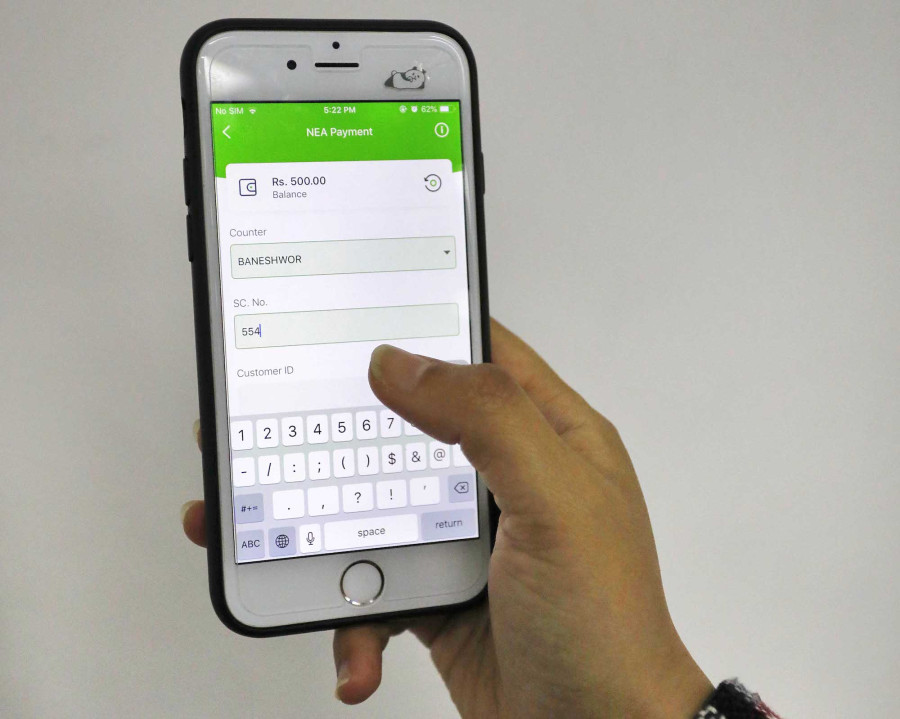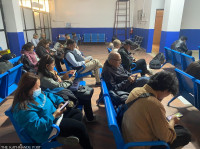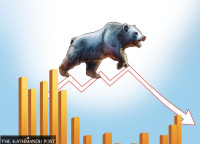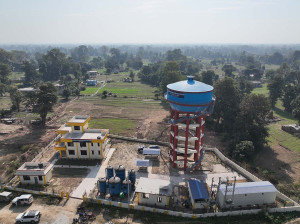Money
Digital payment companies cash in with cashless transactions during pandemic
Restrictions came as a boon not only for people but also operators, who witnessed a huge uptick in users.
Tsering Ngodup Lama
In August last year, Dawa Lama, upon the insistence of a friend, downloaded eSewa, an online payment gateway app, and created an account.
But for more than six months after signing up, Lama didn’t use it once.
“I was so habituated with making cash payments, that even though I had the digital wallet app, I never really used it,” said Lama, a self-professed tech-averse millennial.
But things changed after Covid-19 came along.
“When Covid-19 hit, it felt much safer and convenient to use a digital wallet app whenever possible,” said Lama. “I have since used the app to pay for food and grocery orders, electricity and internet bills and to top-up my mobile balance.”
When the pandemic hit, it completely redefined normal life. With stores closed and restrictions on vehicular movements, for many Nepalis, digital wallet apps were often the only option to make payments with, presenting the app companies with a huge growth opportunity.
Between March to August, eSewa, a pioneer payment app, saw its user base increase by almost 35 percent. “Our prediction for user base growth for the period was around 20 percent, but due to the pandemic, we recorded 15 percent more than our expectation,” said Subhas Sapkota, CEO of eSewa. “We now have a total user base of 3.5 million.”
IME Pay, another digital wallet app, saw its user base increase by 25 percent between the months of March and August.
“More than 60 percent of the new users we generated since March are from semi-urban and rural parts of the country,” said Mohit Agrawal, Assistant Manager of IME Pay. “Similarly, in those months, the number of our active user base soared by 400 to 500 percent.”
The way the pandemic altered normal life, say executives, proved a catalyst for many to adopt online payment gateways. “The pandemic gave those unfamiliar with the workings of digital wallet ample reasons to learn it, and the prolonged lockdown, which gave people ample free time, further helped the cause,” said Sapkota.
At the height of the lockdown, IME Pay’s call centre was flooded with people calling to inquire about the app.
“Calls at our call centre increased by 200 percent. Apart from our customer service representatives, our agents, who are spread across the country, also educated thousands on the workings of the digital wallet system,” said Agrawal.
For online payment gateway companies, the huge surge in users during the pandemic proved instrumental in preventing transaction volume from plunging.
“Despite the prolonged closure of aviation, movie halls, schools, restaurants, all of which are sectors that contribute with a high volume of transactions, our transaction volume didn’t decrease,” said Sapkota. “Before the pandemic, our daily transaction was around Rs1 billion a day, and it has remained the same despite the lockdowns and closures of so many businesses.”
According to Agrawal, for IME Pay, transactions from the domestic aviation industry made up 20 to 25 percent of the app’s total transaction volume and restaurants and petrol pumps also contribute significantly in the business of the company established in 2017.
“But despite the pandemic’s effect on these, our transaction volume has increased by 200 to 300 percent,” said Agrawal.
Segments like mobile recharge top-ups, internet, electricity, water bill payments also contributed, according to the companies.
“Another sector that we saw transaction increase is the insurance sector,” said Sapkota.
For IME Pay, one of the biggest drivers for its surge in transaction volume was domestic and international remittance.
“People were used to going to physical vendors to send money to their loved ones and had no idea that the same can be done via an app,” said Agrawal. “When the lockdown forced all those vendors to close, they began looking for an alternative and found so in our apps.”
For digital wallet apps, one of the biggest barriers to growth has always been the low adoption rate. To educate and inform people about the payment system and to get them on board, companies used to spend millions of rupees in advertisements and promotions.
Digital payment companies get a small commission from vendors and the percentage of commission depends on the volume of total transactions and agreement with individual vendors.
But the pandemic helped achieve what millions of advertisement budgets couldn’t, say industry’s stakeholders.
“This year due to Covid-19, we haven’t been able to do any major promotional and branding activities, to educate people about digital payment,” said Sapkota. “Nonetheless, we witnessed a strong demand for our product because the current reality has made digital wallets the need of the hour.”
Sapkota likens the pandemic’s positive impact on Nepal’s digital payment companies to what demonetisation did to India’s digital payment industry in 2016. Overnight the Indian government demonetised Rs500 and Rs1000 notes, leading to a massive cash shortage.
“When India demonetised some of its currency notes, the move led many Indians to get onboard the country’s digital payment ecosystem,” said Sapkota. “The pandemic’s impact on Nepal’s digital payment industry has been similar.”
The industry is optimistic that when the pandemic ends and things return to normalcy, not only will the new users continue using digital wallet apps but more will follow suit. “It’s all about convenience, and these apps really make things so much easier. You no longer have to wait in long queues to pay your utility bills, no more trips to stores to buy recharge cards for your phones, and you can transfer money to people right from your smartphone,” said Agrawal. “Once people get used to it, it’s hard to go back to the old way of doing things.”
It’s not just companies and users who benefit from a thriving digital wallet industry but also the country’s economy.
“Unlike cash transactions, digital transactions bring better transparency. Digital transactions also help control tax evasion,” said Gunakar Bhatta, spokesperson at Nepal Rastra Bank. “Less reliance on cash and increased adoption of digital transactions also means the government need not spend as much as it does on printing money.”
Digitising financial transactions is also a government priority, according to him. Digital Nepal Framework 2019, of the Ministry of Communication and Information Technology, has also stressed the importance of digital payment.
“To create a thriving digital financial ecosystem in the country, the government is well aware of the crucial role payment service providers play,” said Bhatta. “Understanding the importance of digital economy, in 2015, Nepal Rastra Bank created a separate department—Payment Systems Department—to better regulate, guide and expand the digital payment landscape, and in 2019, the government introduced the Payment and Settlement Act 2075 to develop, promote, monitor and regulate the digital payment industry.”
Sapkota claims digital wallet payments make up 50 percent of overall digital payment in the country.
Nepal Rastra Bank, however, does not have data on this. “We are working with the concerned authorities to collect the data,” said spokesperson Bhatta.
“By allowing people to digitally pay for water and electricity bills,” said Agrawal, “the government has played an instrumental role in popularising the concept of mobile wallet payment.”
The potential for growth for digital payments seems to be huge.
“In the past five years, eSewa has grown at 100 percent every year,” said Sapkota. “And we are optimistic that the industry will continue to grow in the coming years.”
For Lama, it’s not just the convenience that digital wallet brings that has got him convinced. “I can also keep track of how much I am spending on a whole host of things, and now that I think of it, I sort of regret not having started using it from last year’s August,” said Lama.




 8.12°C Kathmandu
8.12°C Kathmandu













